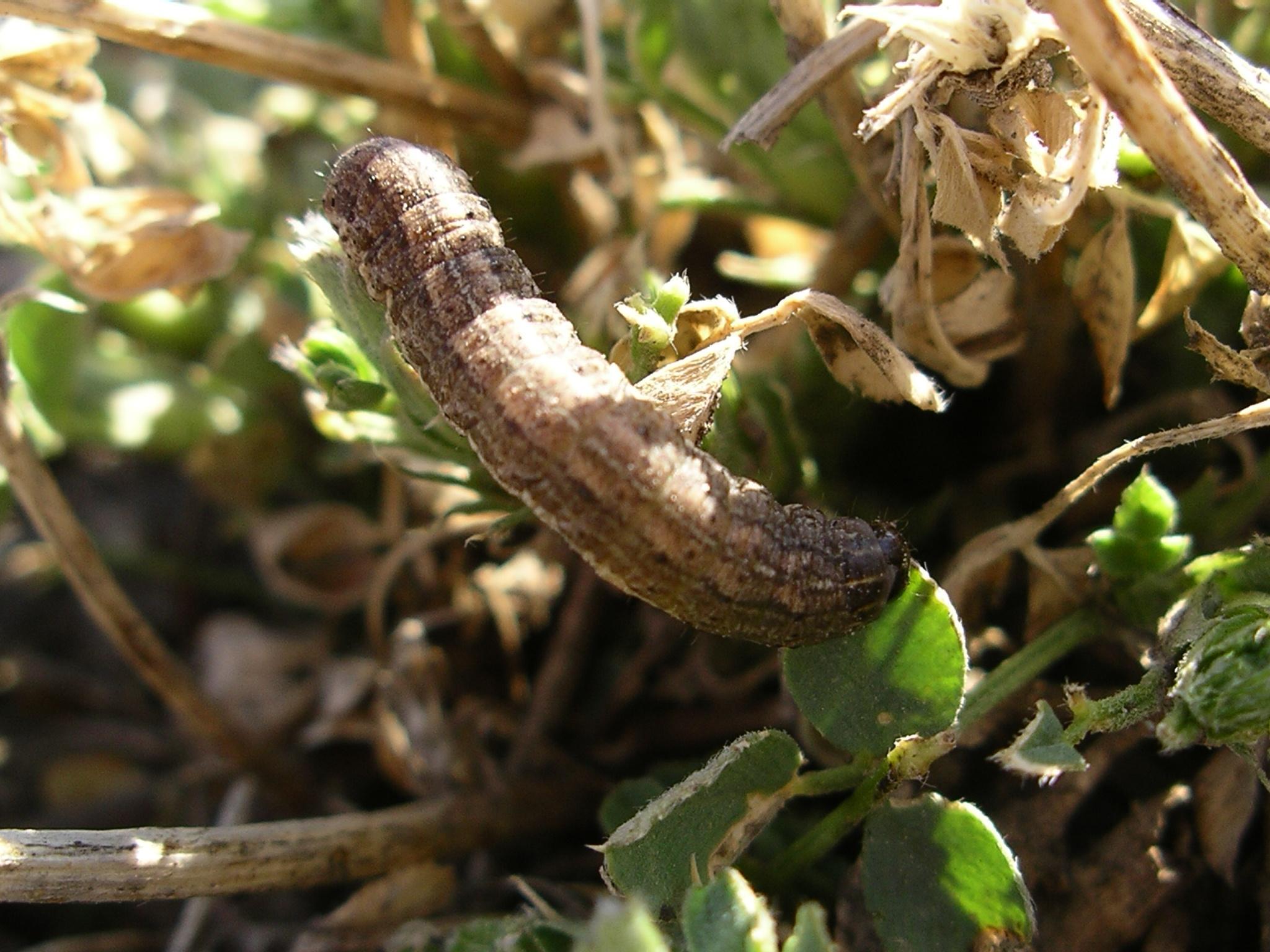Army Cutworm
Euxoa auxiliaris
|
Adult moth. |
Late instar larva feeding on alfalfa. |
The army cutworm migrates annually from eastern Kansas to the Rocky Mountains, where it spends the summer. Adult moths return to the prairie in fall, each female laying up to 1000 eggs in the soil near suitable host plants. Larvae spend most of their time hiding in the soil, emerging to feed on foliage whenever warmer temperatures permit.
Damage to alfalfa occurs from late January through March, and sometimes into April when cold temperatures persist. This pest is usually more of a problem in south central Kansas. Feeding may destroy small plants and defoliation of older, established plants can reduce hay yield and quality from the first cutting, with carryover impacts on later cuttings if damage has been severe. Successful control depends on detecting infestations before defoliation becomes extensive and controlling larvae while they are above ground. Seedling stands are most vulnerable. The treatment threshold is two or more larvae per square foot in seedling fields, and four or more per square foot in established fields.
More detailed information on the life history and biology of the army cutworm can be found in KSRE publication MF3150.
Please refer to the most recent Alfalfa Insect Management Guide for specific control options.
Page last updated 4/17/2024 by J.P. Michaud.

